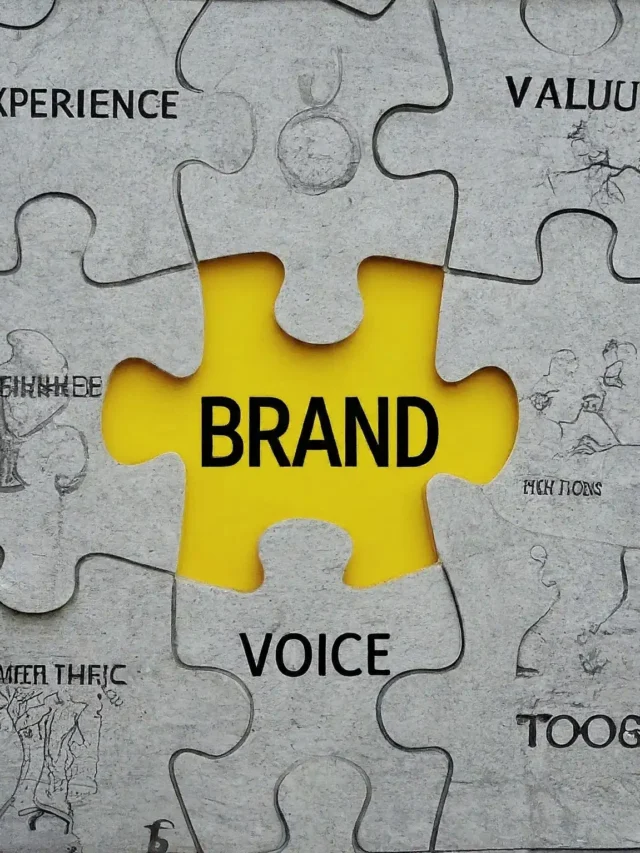Whenever you talk about SEO (Search Engine Optimization), it is natural to mention Canonical Tag. It is an HTML element that is very important for website pages, especially when you want to avoid the problem of duplicate content. In this blog post, we will understand what a Canonical Tag is, why it is important, and how it can be used correctly.
What is a Canonical Tag?
Canonical Tag is an HTML element used as `<link rel=”canonical” href=”URL”>`. Its purpose is to tell search engines which URL is the “master” or “real” copy of a web page. When the same content is available on more than one URL, Canonical Tag helps search engines prioritize the correct URL.
For example, if you have two URLs:
`https://example.com/page1`
`https://example.com/page1?ref=abc`
Both these URLs can show the same content. In such a case, you can use the Canonical Tag to tell the search engines which of these URLs is the original.
Why is the Canonical Tag important?
1. Prevents duplicate content problem: Duplicate content can be difficult for search engines to identify and rank. By using the Canonical Tag, you can make it clear which content is the original copy, so that your website’s ranking will not be negatively affected.
2. Preserve link juice: When you have the same content on multiple URLs, it can split the link juice (authority coming from links). The Canonical Tag helps focus this juice on the right page.
3. Optimizes the website’s crawling budget: Search engine bots have a limited budget to crawl important pages on your site. With Canonical Tag, you can ensure that the bots are crawling the right pages, thereby improving your website’s SEO performance.
How to use Canonical Tag?
1. Adding a Canonical Tag to the HTML header is very simple. You can add it to the `<head>` section of each page on your website. This tag informs search engines which URL is the “real” or “primary” copy of the page.
Example
Suppose you have a page whose real URL is `https://example.com/page1`, you can add it as follows:
“`HTML
<head>
<link rel=”canonical” href=”https://example.com/page1″>
</head>
“`
In the above example, the `<link rel=”canonical”>` tag indicates that the actual or primary copy of this page is `https://example.com/page1`.
Step-by-Step Process
1. Go to the `<head>` section of the webpage: Find the `<head>` tag in your HTML file.
2. Add the Canonical Tag: Add `<link rel=”canonical” href=”your_page_url”>` inside the `<head>` tag.
3. Select the correct URL: Make sure that the URL given in `href` is the one you want to show as the primary or primary URL.
This way, you can point search engines to the correct page and avoid duplicate content issues.
2. Using the Canonical Tag for duplicate pages is very important, as it helps search engines understand which page should be given priority. When the same content is available on different URLs, you can use Canonical Tag to point search engines to the correct page.
Example
Suppose the same content on your website is available on two different URLs:
1. `https://example.com/page1`
2. `https://example.com/page1?ref=abc`
Both these pages show the same information, but the URLs are different. In such a case, you can use Canonical Tag on the duplicate page (`https://example.com/page1?ref=abc`) so that search engines know which is the original page. It can be added like this:
“`HTML
<head>
<link rel=”canonical” href=”https://example.com/page1″>
</head>
“`
Here the `<link rel=”canonical”>` tag indicates that `https://example.com/page1` is the real and primary URL that search engines should index.
Benefits of using Canonical Tag on duplicate pages
1. Avoid search engine confusion: When the same content is available on multiple URLs, search engines don’t know which page to rank. Canonical Tag makes it clear which URL is primary.
2. Preserve link authority: Canonical Tag ensures that the link authority received by duplicate pages goes to the primary URL, which has a positive impact on SEO.
3. Proper use of crawling budget: Search engine bots have a limited crawling budget on your website. Using Canonical Tag can ensure that bots crawl your primary pages, not duplicate pages.
How to use Canonical Tag correctly?
1. Add a Canonical Tag to each duplicate page that points to the main URL.
2. Use Canonical Tag correctly when you have the same content in different versions (such as HTTP/HTTPS or www/non-www).
3. Use Canonical Tag for URLs created with different filters and parameters in product pages on e-commerce websites.
By using Canonical Tag correctly, you can improve your website’s ranking and avoid problems related to duplicate content.
3. It is very important to use Canonical Tag on e-commerce websites, as they often have problems with duplicate content and different URLs. Different filters, sorting options, and tracking parameters in product pages can lead to multiple URLs that show the same content. In such a situation, the correct use of Canonical Tag helps the search engine to understand the priority of the correct page.
How to use Canonical Tag on e-commerce websites?
1. For URLs built with filters and sorting: When a user views the product page with a particular filter (such as size, color, or price) or sorting option (such as ‘high-to-low’, ‘low-to-high’), the URL changes. For example:
`https://example.com/shoes?color=red&sort=price-high-to-low`
Add Canonical Tag for pages that point to the original product page, such as:
“`HTML
<head>
<link rel=”canonical” href=”https://example.com/shoes”>
</head>
“`
This will ensure that search engines prioritize the original page (`https://example.com/shoes`).
2. Canonical Tag for pagination: E-commerce websites often have product listings paginated in multiple ways, such as ‘Page 1’, ‘Page 2’, etc. In such situations, you can point the Canonical Tag to the main page on each page, or use `rel=”prev”` and `rel=” next”` tags.
3. For product variants: If there are different variants of the same product, such as different colors or sizes, the Canonical Tag can be used to point to the page of the main variant of that product. Example:
“`HTML
<head>
<link rel=”canonical” href=”https://example.com/product1″>
</head>
“`
This will ensure that the main product page is given priority over all variants.
4. URLs with tracking parameters: E-commerce sites often use tracking parameters (such as `utm_source`, `utm_campaign`). If your URLs contain such parameters, give priority to the original URL for search engines through Canonical Tag.
Benefits of correct use of Canonical Tag in e-commerce websites
1. Avoid duplicate content problem: Canonical Tag ensures that search engines index only the page that is original and primary.
2. Better crawling budget utilization: The crawling budget of search engine bots will be spent on important pages of your website, not on duplicate pages.
3. Concentrates link juice: The link authority received from all duplicate and variant pages will go to the main page, improving the SEO performance of your website.
Correct and strategic use of Canonical Tag can help your e-commerce website get better rankings and avoid duplicate content problems.
4. Using Canonical Tag correctly in paginated content is important, as it helps search engines understand which is the primary page of content and which page comes in which order during pagination. If not implemented correctly, it can lead to duplicate content and SEO issues.
How to use Canonical Tag in paginated content?
1. Make each page canonical to itself: If you have a paginated listing (such as a multi-page list of blog posts), give each page its Canonical URL. This means that the Canonical Tag on pages like `Page 1`, `Page 2`, and `Page 3` should point to their respective URLs. For example:
At `https://example.com/blog?page=1`:
“`HTML
<head>
<link rel=”canonical” href=”https://example.com/blog?page=1″>
</head>
“`
At `https://example.com/blog?page=2`:
“`HTML
<head>
<link rel=”canonical” href=”https://example.com/blog?page=2″>
</head>
“`
2. Use `rel=”prev”` and `rel=” next”` tags: For better SEO in pagination, use `rel=”prev”` and `rel=” next”` tags. These tags tell search engines which page comes first and which page comes next. For example, on `Page 2` you could add the following tags:
“`HTML
<head>
<link rel=”prev” href=”https://example.com/blog?page=1″>
<link rel=”next” href=”https://example.com/blog?page=3″>
</head>
“`
3. Don’t use the Canonical Tag of the main page: Make sure that you don’t make all the paginated pages canonical to the main page (e.g. `https://example.com/blog`). This can confuse search engines and only the main page will be indexed, while the paginated pages will be ignored.
Benefits of using Canonical Tag correctly in paged content
1. Helps search engines navigate better: The correct use of Canonical Tag with `rel=”prev”` and `rel=” next”` tags tells search engines what is the order of the content and they can crawl it correctly.
2. Avoids duplicate content: Having the Canonical URL of every page on its own page avoids the problem of duplicate content.
3. Improves user experience: Search engines will index the correct pages, which will make it easier for users to find the content and improve the ranking of the website.
Things to note
Do not use the `no index` tag in paginated listings, as it will prevent search engines from indexing those pages.
Make sure all pages use the correct `rel=”prev”` and `rel=” next”` tags so that search engines know the correct order of the pages.
Managing the Canonical Tag and paginated content correctly will improve your website’s SEO performance and positively impact your ranking in search engine results pages (SERPs).
Some common uses of Canonical Tag
1. Parameterized URLs: Such as URLs with tracking parameters (e.g.: `https://example.com/page?utm_source=newsletter`).
2. HTTPS and HTTP versions: If your website is available in both HTTP and HTTPS, you can set the HTTPS version as the Canonical Tag.
3. www and non-www versions: Such as `https://www.example.com` and `https://example.com` can be managed with Canonical Tag.
Tips to avoid mistakes
Set the correct URL: Always set the only and correct URL as Canonical Tag.
Don’t use Canonical Tag on all pages: Use Canonical Tag only on pages where there is a possibility of duplicate content.
Be careful with redirections: If there is a redirection on your Canonical URL, search engines may get confused. So make sure that the Canonical URL is correct and live.
Conclusion
Canonical Tag is an important SEO element that helps to maintain the ranking of your website and avoid duplicate content problems. Its correct use can get you a better rank in search engines and increase the organic traffic of your website.
Follow the rules mentioned above when using Canonical Tags, and leave no stone unturned to optimize your website for search engines.
image credit:- twaino











